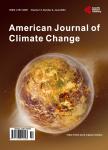Techniques of Remote Sensing and GIS as Tools for Visualizing Impact of Climate Change-Induced Flood in the Southern African Region
作者机构:Department of Urban and Regional PlanningJackson State UniversityJacksonMSUSA USDA-ARS Tropical Agriculture Research StationMayaguezPuerto Rico Department of Mathematics and Computer SciencesOakwood UniversityHuntsvilleALUSA Water Research Commission(WRC)Private Bag X03GezinaSouth Africa Texas Department of Agriculture(TDA)DallasTXUSA
出 版 物:《American Journal of Climate Change》 (美国气候变化期刊(英文))
年 卷 期:2017年第6卷第2期
页 面:306-327页
学科分类:1002[医学-临床医学] 100214[医学-肿瘤学] 10[医学]
主 题:Remote Sensing Geographic Information Systems Climate Change Flooding La Nina
摘 要:Flooding is a major problem facing Southern African region. The region has been experiencing flood for the past two decades. This flood event has been exacerbated in recent years by global weather pattern known as La Ni?a which cools ocean waters in the equatorial Pacific and changes rainfall patterns across the world. This change in weather pattern has resulted in increased rainfall over Southern Africa causing flash floods resulting in extensive socioeconomic loses, casualties and environmental damage. This study employs remote sensing and geographical information systems (GIS) data to visualize the impact of climate change caused by flooding in the Southern African region in order to assist decision makers’ plans for future occurrences. To achieve these objectives, the study used Digital Elevation Model (DEM), temporal Landsat Enhanced Thematic Mapper Plus (ETM+) and Moderate Resolution Imaging Spectroradiometer (MODIS) satellites data obtained from the United States Geological Survey (USGS) and NASA’s Earth Observatory websites in order to show the spatial dimensions of the damage and the flooded area. Results of the study revealed notable damages to social and natural environments as well as flood risk zones and watercourses in the study area. The paper concludes by outlining policy recommendations in the form of the need for building drainage ditches on the flat plains identified in this study to accommodate flood flows, the design of a comprehensive Regional Emergency Information System (REIS) with support from the governments in the study area and the neighboring countries. Building such system, the paper concludes could offer decision-makers access to the appropriate spatio-temporal data for monitoring climate change induced emergencies related to seasonal floods.



